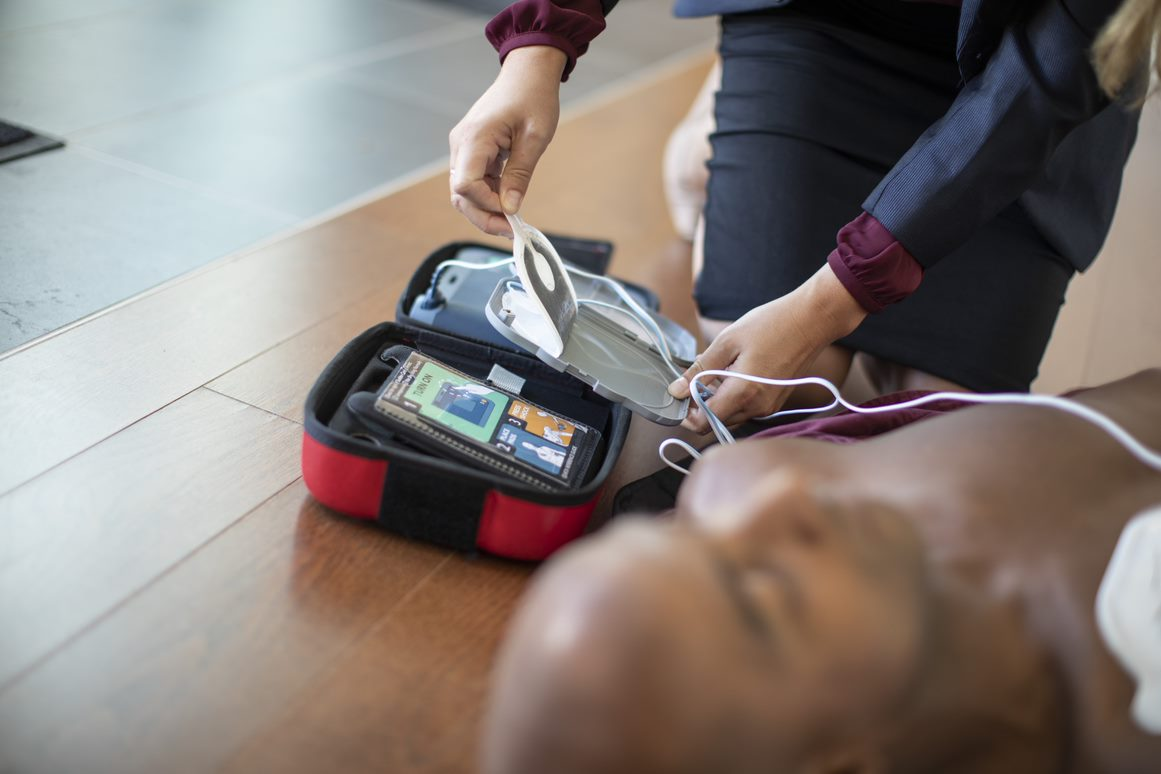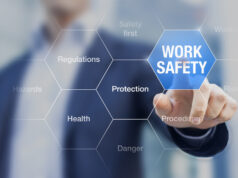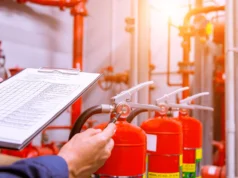In today’s fast-paced, high-demand world, the workplace is more than just a location; it’s a second home for many. As individuals spend a significant chunk of their daily lives working, it becomes imperative for employers and management to prioritize workplace safety. Just as we wouldn’t compromise the safety of our homes, we shouldn’t compromise on workplace safety either. Whether it’s ensuring clear evacuation routes, maintaining equipment in pristine condition, or providing regular safety training, the onus is on companies to create environments where employees feel safe and protected.
Workplace safety extends beyond preventing physical accidents or hazards; it encompasses preparing for medical emergencies that can happen unexpectedly. Imagine a scenario where a coworker collapses suddenly. While it’s traumatic, it’s a potential reality given the sedentary lifestyles many lead coupled with other predisposing factors. Hence, being prepared for such emergencies is not just an ethical obligation but should be seen as a paramount duty.
Transitioning from Awareness to Preparedness
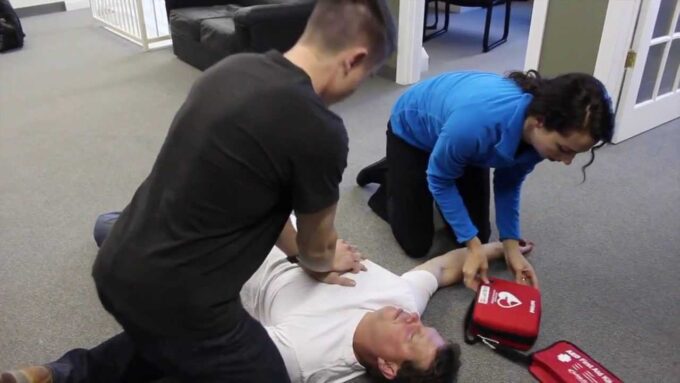
While most workplaces have fire drills and basic first aid kits, how many are equipped to handle more severe emergencies like sudden cardiac arrests (SCA)? The numbers are staggeringly low, and that’s a concern. SCA, an abrupt cessation of heart function, can lead to death within minutes if not treated. The crucial tool in these situations? An Automated External Defibrillator (AED).
Critical Role and Purpose of an AED in Emergency Situations for Optimal Workplace Safety
In the moments when a life hangs in the balance, the importance of rapid and effective intervention cannot be exaggerated. In emergencies, every second is crucial. One critical tool that plays a key role in saving lives during cardiac emergencies is the AED.
An AED is a portable device operated to treat SCA. By the end, you will explore the purpose of an AED during emergencies, its significance and benefits, and how it can make a difference when every moment is crucial. AEDs are furnished with adhesive electrode pads that are applied to the patient’s chest. The device then analyzes the heart’s electrical activity and decides whether a shock is mandated or not. If necessary, it delivers a carefully calibrated electric shock to reset the heart’s rhythm.
In the moments when a life hangs in the balance, the importance of rapid and effective intervention cannot be exaggerated. In emergencies, every second is crucial. One critical tool that plays a key role in saving lives during cardiac emergencies is the Automated External Defibrillator (AED). An AED is a portable device operated to treat sudden cardiac arrest (SCA). By the end, you will explore the purpose of an AED during emergencies, its significance and benefits, and how it can make a difference when every moment is crucial.
AEDs are furnished with adhesive electrode pads that are applied to the patient’s chest. The device then analyzes the heart’s electrical activity and decides whether a shock is mandated or not. If necessary, it delivers a carefully calibrated electric shock to reset the heart’s rhythm. This process is known as defibrillation and can be a life-saving intervention during a cardiac arrest. AEDs can be discovered in manifold public places, including airports, shopping malls, schools, and sports facilities. Their widespread availability boosts the chances of access during an emergency.
The purpose of AED and its benefits
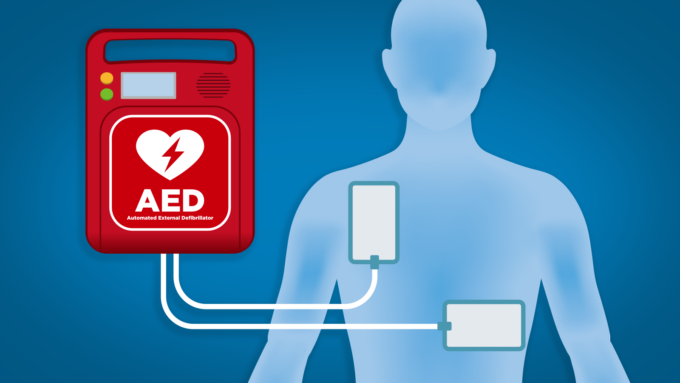
Before studying the benefits, it is compulsory to understand the purpose of AEDs. Sudden cardiac arrest (SCA) occurs when the heart’s electrical system malfunctions, ushering to irregular heart rhythms. SCA is an electrical issue. During SCA, the heart may shake or beat chaotically, making it incapable of effectively pumping blood. If not corrected quickly, the possibility of survival decreases. The purpose of an AED is to deliver a controlled electric shock to the heart to reset its rhythm. Timing is mandatory in cases of SCA, and AEDs play a critical role in providing timely defibrillation.
Here are some benefits of AED:
1. Increases survival rate
In the critical moments of a sudden cardiac arrest (SCA), time is the most precious thing, and the key to increasing survival rates lies in early intervention. AED plays a key role in this process by facilitating swift and effective action. The most significant benefit of AEDs is their capability to furnish early intervention in cases of sudden cardiac arrest. Survival rates fall by approximately 10% for each minute that passes without defibrillation. AED boosts the chances of survival by delivering defibrillation.
2. Accessible
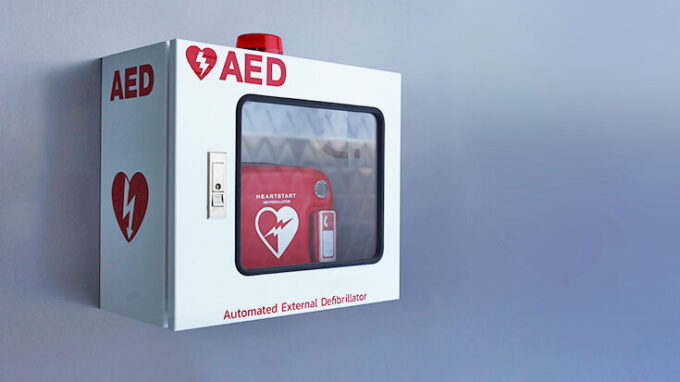
AEDs are devised to be accessible to the general public. They are strategically set in public spaces, schools, offices, shopping malls, and airports, among other locations. The visibility and accessibility of AEDs confirm that bystanders can take action quickly, even before professional medical help reaches them.
3. Easy-to-use
AEDs are devised for ease of use, making them accessible and versatile options for individuals with little or no medical training. They feature straightforward, step-by-step instructions, often accompanied by visual and auditory alerts. This simplicity authorizes bystanders to use the device effectively in high-stress situations.
4. Safety feature
AEDs are furnished with sensors that read or examine the victim’s heart rhythm. They are programmed to issue a shock only if a shockable rhythm, such as ventricular fibrillation is detected. This safety component in AED guarantees that the electric shock is delivered only when mandated, which diminishes the risk of damage to the victim.
5. Reduce response time
AEDs significantly decrease response times in emergencies. In cases of SCA, every second is precious. By having AEDs readily available, bystanders can start the defibrillation process immediately, which fills the gap between the onset of cardiac arrest and the arrival of professional medical help.
6. Audio and visual features
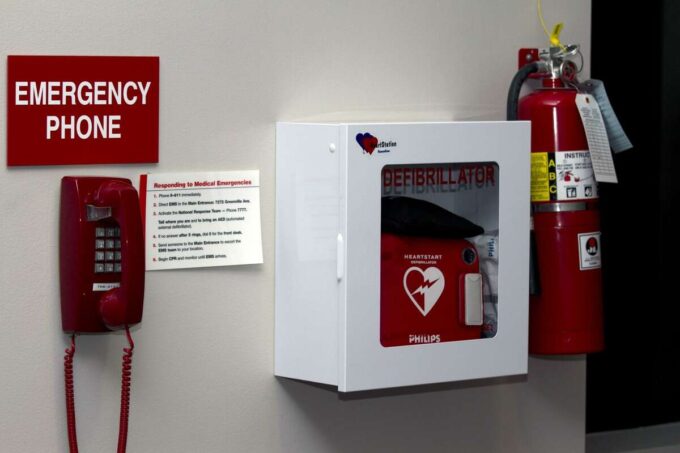
Many modern AEDs equip audio and visual instruction features to guide the user. Not all cases are the same, in some cases where the shock is not compulsory, the audio and visual characteristics of the machine will instruct the user to deliver chest compression or rescue breaths. These features also verify that chest compressions and rescue breaths are furnished effectively by examining the heart rhythm of the victim.
7. Remote monitoring feature
Some AEDs are fitted with connectivity features that authorize remote monitoring by medical professionals. This feature allows experts to guide bystanders, enhancing the quality of care provided until professional help arrives.
To end, the benefits of AEDs extend beyond just saving lives. They include increased survival rates, accessibility, user-friendliness, reduced response times, legal protections, and ethical considerations that reflect a society’s commitment to human well-being. Moreover, AEDs can also usher in cost savings. Successful defibrillation can eliminate long-term disability which reduces the burden on healthcare systems and the associated costs.
The presence and proper use of AEDs in public spaces can make a deep difference in emergencies, producing safer and more compassionate communities. If you want to learn or explore more about AEDs, where to get it from, and how to use it, search for AED Canada today!


